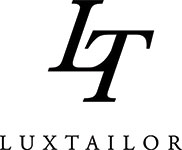In celebration of Women’s History Month, we would like to talk about the history of fashion and how changes in social norms impacted fashion trends.
Looking back at fashion history prior to World War I women were expected to wear corsets and very heavy gowns. At the beginning of the war more women became essential workers and began to wear less restrictive clothing so they could move freely to fulfill their daily schedules.
Since then the corsets were worn for special occasion rather than trends for everyday wear.
Introduction to Edwardian Fashion
House of Creed, the French house began as a tailoring business and designed women’s attire with masculin tailoring incorporating lapels, sleeve cuffs decorated with buttons, warp skirts and high lace collars. This was one of the first fashion houses to incorporate menswear into women’s design making clothing more functional.



During World War I, more women were employed in essential jobs which required them to dress with uniformed attire that best suited their position. Think of trench coats with belts, wide lapels, coats layered with skirts.
During this time, less is more was in thought when it came to design of clothes. With the beginning of World War I, clothing became less constricted from its original silhouette of corsets, wasp waists & ruffle gowns. The boyish “flapper” shape was less restrictive for women who became accustomed to wearing practical uniforms or work wear. The gradual silhouette from curvy hourglass figures would change to tubular outline.

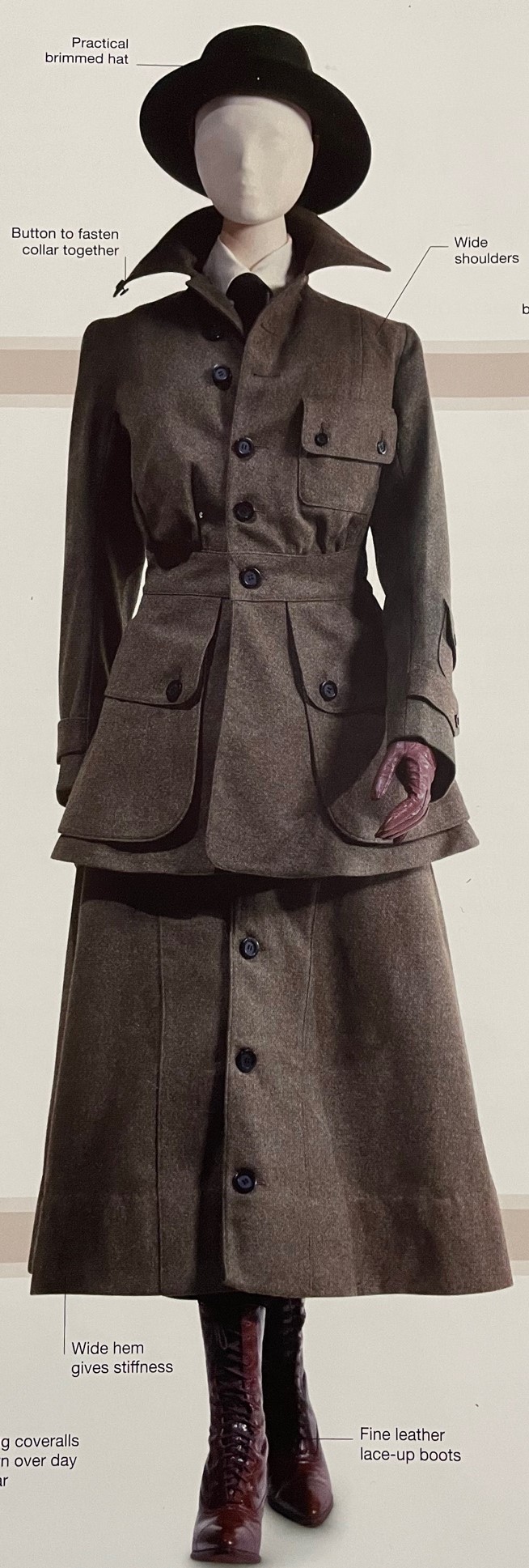

World War I influenced women’s fashion to be worn in many ways. Some outfits could be adapted for workwear to sport activity. Tailor made suits and short waist dresses could be used for other activities. Below are trends that became popular at that time. Shirt and waist dress included triangular inserts for fullness in the skirts. Vertical pleats on the blouse would create fullness wound the bust. Long column skirts would be paired with long jackets hemmed to hip length. High lace collars, loose fitting skirts around the hips.



The images below feature garments formally known as the “Promenade dress”


Evening and tea gowns in the Edwardian era featured evening dresses of silk satin fabrics with the empire waistline with statuesque column silhouette. Silk fabrics were embroidered with colored beads arranged in linear motifs, trompe l’œil (pretend tassels). Dresses became higher waisted with slimmer skirts. With that minimal design, embroidery, bearing and lace were essential in design to complete the look.



House of Doucet
Lady Duff Gordon
House of Lucile
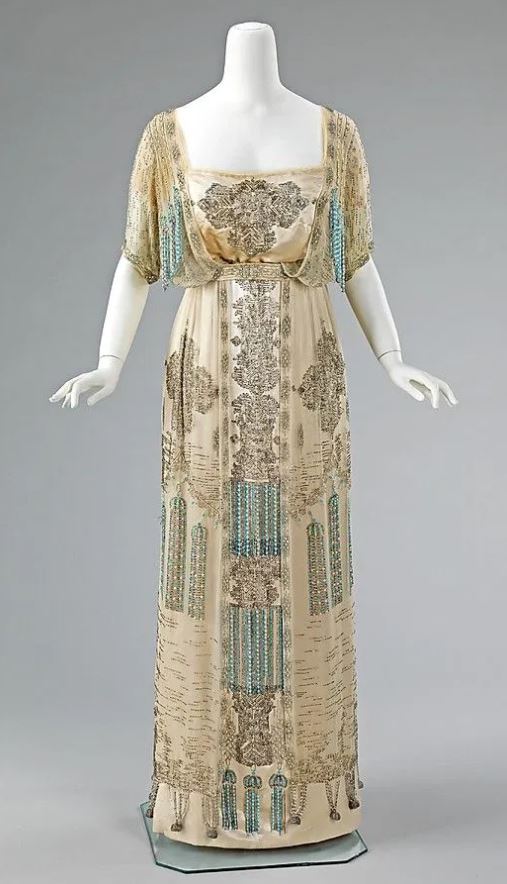
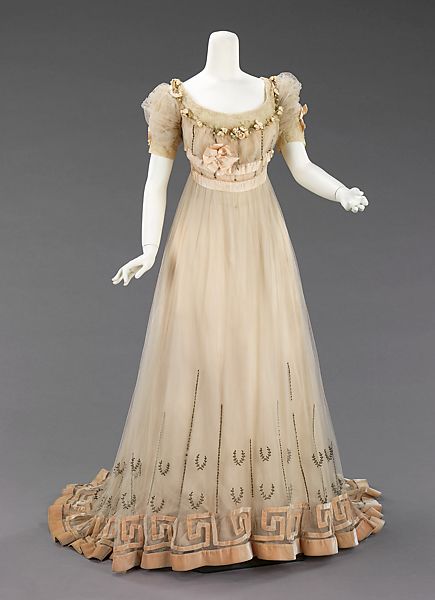

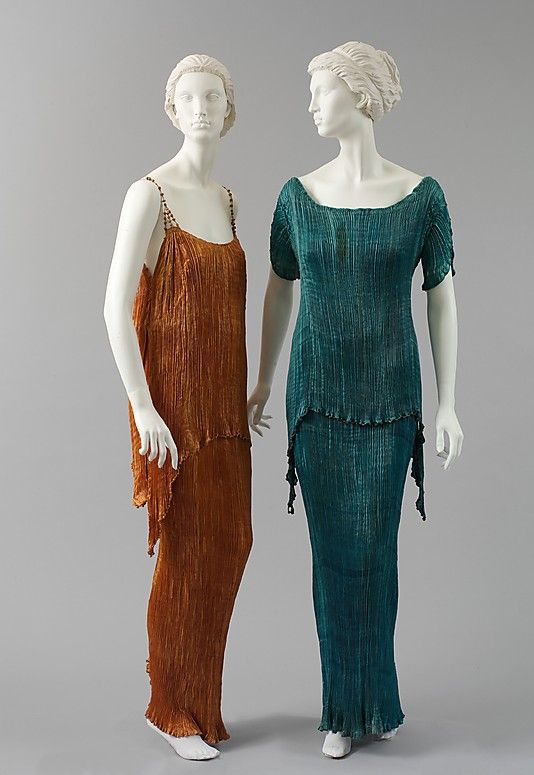
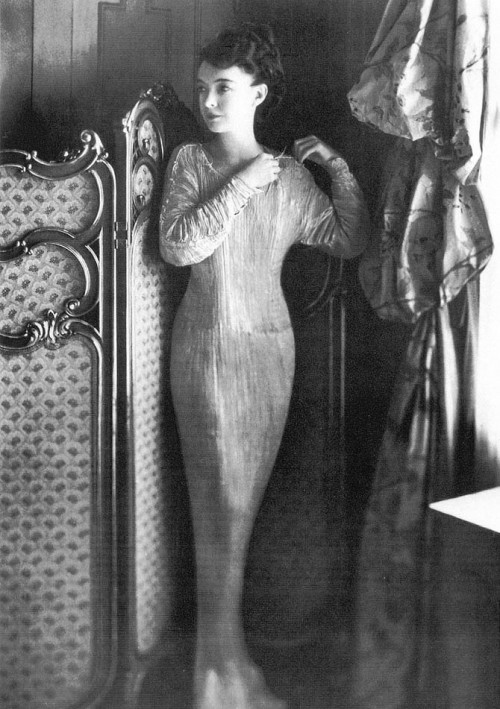
Stay tuned for our next newsletter, where we will tell you more about revolutionized change in evening wear without the use of corsets that were designed after World War I. Designers such as Mariano Fortuny & Paul Poiret influenced simpler silhouettes with more intricate embellishments and use of textiles.
Political history always made effect on fashion. Reflecting on COVID 19 pandemic impact with the first lockdown anniversary this month we watched as the fashion industry has evolved to more of a digital world. We accustomed to buying our clothes online, participating in virtual fashion shows, working and studying remotely, viewing the latest trends on social media at any time available on our phones and leaning towards more comfortable clothing.
We are adapting to a new era in fashion.
